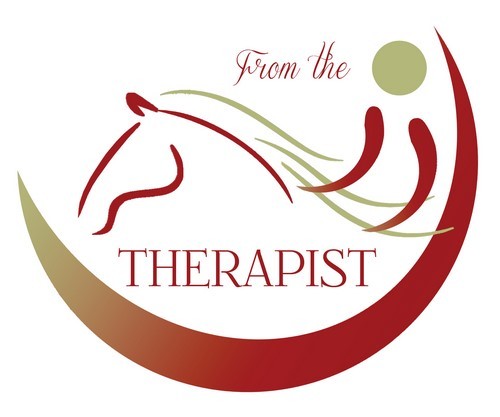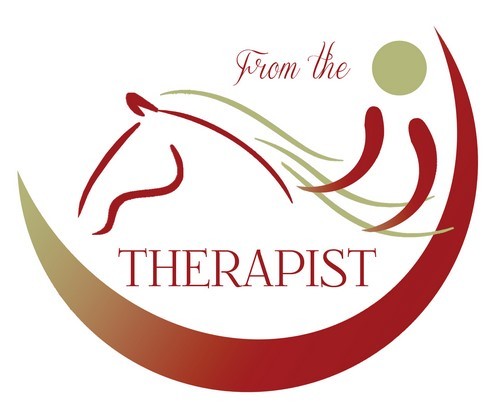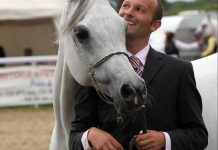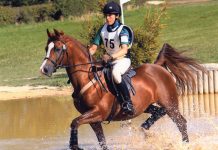Back treatment for horses varies widely between practitioners, but generally focuses on the neck, back and hindquarters as the key locations for treatment. As a McTimoney Animal Therapist, I use animal chiropractic techniques to adjust areas of the spine where there is dysfunction or abnormal range of motion. These gentle adjustments initiate a healing response from the horse’s body, that stimulates the spinal vertebrae to move normally again, and the horse feels more comfortable and can perform properly again. I also use a blend of soft tissue techniques to complement the adjustments and encourage the whole musculoskeletal system to rebalance and restore normal function.
However, sometimes I come across cases where the neck and back are influenced by structures even further forwards than the first spinal vertebrae – the jaw and hyoid apparatus – and these cases are absolutely fascinating to see.
My first experience of this was actually in a dog. She was extremely old, wobbly and basically the owners were looking for treatment to make her more comfortable in her final days, rather than expecting miracles. This lovely little spaniel was difficult to palpate through her spine accurately as she swayed constantly from side to side, but it was very clear that her temporomandibular joint (TMJ), where the lower jaw meets the skull, was much more pronounced on one side. One very light adjustment to the TMJ in this little old dog, and suddenly she stood absolutely still and quiet for me to palpate through the rest of her body.
Following her treatment, the owners reported a change in her behaviour where she became more active and stronger again for the short time she had before her other conditions finally took over. Although I had proceeded to treat other areas of the spine, the changes following that first TMJ adjustment were profound and I am sure had a strong bearing on her improvement.
So, how might that be? Well, there is some evidence in humans that the TMJ is extremely important for co-ordinated movement. It is connected through soft tissues to the hyoid bone which is a free-floating bone extending from the throat area up to just below the ear on each side. If there is tension or pathology in the TMJ, then this influences the movement of the hyoid apparatus and this then filters back into how the brain measures balance, and how the neck and body respond to movement, thereby producing difficulties in co-ordination in even the most basic movements.
The effect of the TMJ is seen most dramatically by viewing videos taken by Dr Brendan Stack, an American dentist who invented a dental orthotic for patients with damage to the TMJ and resultant loss of motor control of movement. Look up his figure skater or teenage track star videos and prepare to be amazed by what you see. In both cases, damage to the TMJ has produced symptoms of motor neurone disease, and inability to walk respectively. In both cases, improvement after fitting the dental orthotic, which effectively restores the TMJ joint to normal pressure again, is almost immediate.
Having studied this effect in humans, I have now seen equine cases where the likelihood is that TMJ pressure has an effect on the motor control of the horse too. These cases are not wobblers, and are not diagnosed as neurological in any way by the vet. They often present as a case that has not responded to previous therapy, yet heralds symptoms of a back issue such as stiffness, lack of impulsion or laziness that cannot be altered through training, feeding or any other means. No lameness is evident either.
One particular case I saw was an older gelding whose spinal X-rays showed no issues and yet he would not go forwards and constantly wanted to put his head on the ground. He did have mild hock arthritis but this was felt to be incidental and not related to the symptoms. When I palpated his back, the horse had significant curvature through the spine and rotation of the pelvis to one side when stood square, but after releasing the TMJ and hyoid area, most of these issues were gone and relatively few adjustments were then required. Furthermore, just a few days later his owner called to say that he was carrying his head normally again and felt much better to ride. His improvement did not maintain at the same level, but he was good enough for her to continue riding him where she had been considering his retirement before treatment. In this case, there were no pathological changes found on X-ray of the TMJ area, but there remains the possibility that pressure had built up within the TMJ as the teeth were now old and the distance the teeth needed to meet at had altered over the years. If the teeth are shorter or longer, then this produces a narrowing or widening of the gap within the TMJ joint.
Another case I saw, which may back up this theory extrapolated from our knowledge of how changes in the ‘bite’ in humans affects the TMJ, was a young five-year old horse who changed his movement immediately after having his teeth rasped. There were no obvious spinal issues or muscular soreness, but the horse just didn’t feel the same to ride from that day on. Six months later, he had improved again, possibly as the teeth had continued to erupt and so the change in ‘bite’ had returned the TMJ pressure to normal again.
So how would you know that the TMJ and hyoid are the problem areas in your horse? Well, generally you don’t. While I do now check these structures during standard treatment, they tend to be indicated more clearly when neck, back or pelvic treatment has not been successful. However, it does emphasise the importance of keeping the mouth and teeth maintained by your dentist as your horse gets older, to prevent pressure building up from longer, older teeth closing the gap at the TMJ. This is such a new area of knowledge, it will be fascinating to see what we find out next as further research is undertaken in humans and animals.












